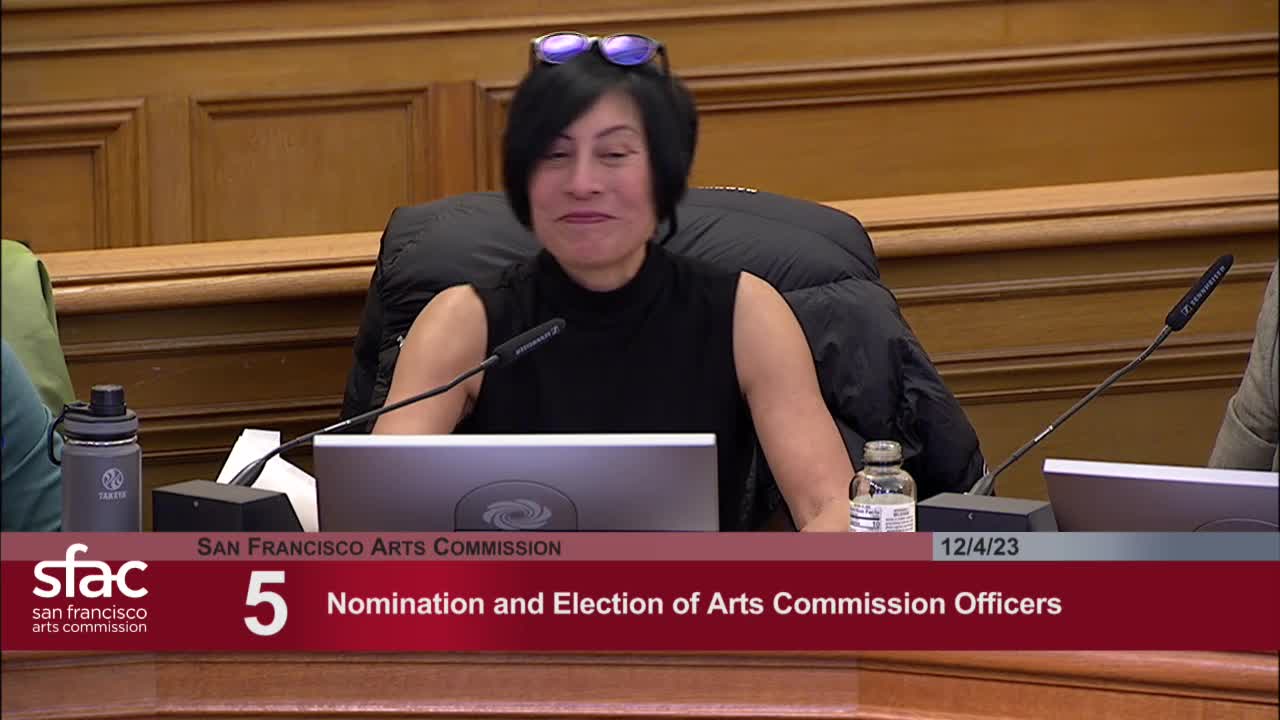Fresno committee votes to store Dragon Relief sculpture during health center renovations
December 04, 2023 | San Francisco City, San Francisco County, California

This article was created by AI summarizing key points discussed. AI makes mistakes, so for full details and context, please refer to the video of the full meeting. Please report any errors so we can fix them. Report an error »

In a recent meeting at San Francisco City Hall, city officials and commissioners gathered to discuss significant developments in the realm of public art and community engagement. The atmosphere was charged with a sense of responsibility as they navigated the complexities of preserving the city’s artistic heritage while accommodating necessary renovations.
One of the key discussions centered around the fate of the "Dragon Relief" sculpture, a piece created by artist Patty Bowler in 1969. As the Chinatown Public Health Center prepares for extensive renovations, the Visual Arts Committee has decided to remove the sculpture and place it into storage. This decision, while difficult, followed a thorough review process that included community consultations and legal considerations. Commissioner Beltran, who presented the report on behalf of the absent committee chair, emphasized the importance of community input in reaching this conclusion.
The committee's decision sparked a robust dialogue among commissioners, highlighting the challenges of balancing artistic integrity with urban development. Commissioner Hakimi expressed concern over the handling of the sculpture, noting that it represented a significant milestone as one of the first public commissions awarded to a female artist. He urged for more thoughtful planning in future projects to ensure that art is integrated into the design process from the outset, rather than treated as an afterthought.
In addition to the discussion about the Dragon Relief, the meeting also featured updates on the installation of a new bust of former Mayor Ed Lee. Project manager Dorka Keane shared insights into the design process, which aimed to portray Lee as a relatable figure, engaging with the public rather than towering over them. This project, like the Dragon Relief, has involved extensive collaboration with the community and the late mayor's family.
As the meeting progressed, commissioners reflected on the broader implications of these decisions for the city’s artistic landscape. There was a collective hope that the Dragon Relief would not remain in storage indefinitely, with plans already in motion to find a new public location for the sculpture. The discussions underscored a commitment to ensuring that San Francisco's public art continues to resonate with its diverse communities, even amidst the challenges of urban renewal.
In conclusion, the meeting served as a reminder of the delicate balance between preserving cultural heritage and adapting to the evolving needs of the city. As San Francisco moves forward, the voices of its artists and community members will remain crucial in shaping a vibrant and inclusive public art scene.
One of the key discussions centered around the fate of the "Dragon Relief" sculpture, a piece created by artist Patty Bowler in 1969. As the Chinatown Public Health Center prepares for extensive renovations, the Visual Arts Committee has decided to remove the sculpture and place it into storage. This decision, while difficult, followed a thorough review process that included community consultations and legal considerations. Commissioner Beltran, who presented the report on behalf of the absent committee chair, emphasized the importance of community input in reaching this conclusion.
The committee's decision sparked a robust dialogue among commissioners, highlighting the challenges of balancing artistic integrity with urban development. Commissioner Hakimi expressed concern over the handling of the sculpture, noting that it represented a significant milestone as one of the first public commissions awarded to a female artist. He urged for more thoughtful planning in future projects to ensure that art is integrated into the design process from the outset, rather than treated as an afterthought.
In addition to the discussion about the Dragon Relief, the meeting also featured updates on the installation of a new bust of former Mayor Ed Lee. Project manager Dorka Keane shared insights into the design process, which aimed to portray Lee as a relatable figure, engaging with the public rather than towering over them. This project, like the Dragon Relief, has involved extensive collaboration with the community and the late mayor's family.
As the meeting progressed, commissioners reflected on the broader implications of these decisions for the city’s artistic landscape. There was a collective hope that the Dragon Relief would not remain in storage indefinitely, with plans already in motion to find a new public location for the sculpture. The discussions underscored a commitment to ensuring that San Francisco's public art continues to resonate with its diverse communities, even amidst the challenges of urban renewal.
In conclusion, the meeting served as a reminder of the delicate balance between preserving cultural heritage and adapting to the evolving needs of the city. As San Francisco moves forward, the voices of its artists and community members will remain crucial in shaping a vibrant and inclusive public art scene.
View full meeting
This article is based on a recent meeting—watch the full video and explore the complete transcript for deeper insights into the discussion.
View full meeting
